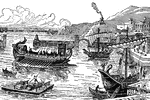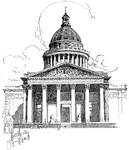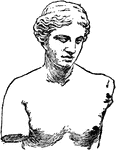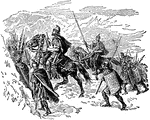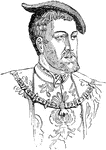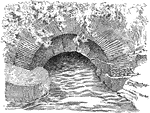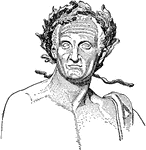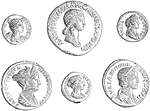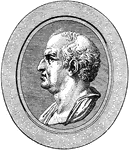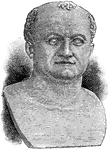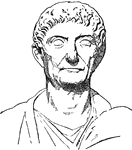
Eagle Bearer
An eagle bearer from the Roman Empire. The eagle was made of precious metal and was the symbol of the…
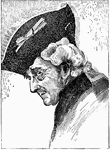
Frederick the Great
Also known as Frederick II of Prussia. He reigned from 1740 to 1786 and was a proponent of enlightened…
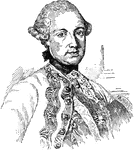
Joseph II
The Holy Roman Emperor from 1765 to 1790, and ruler of the Habsburg lands from 1780 to 1790.

Emmanuel Joseph Sieyès
A French Roman Catholic clergyman who helped transform the Estates-General into the National Assembly.

La Madeleine
"Begun by Napoleon in 1806; not completed until 1842. The emperor planned it as a 'of fame' to commemorate…
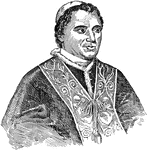
Pope Pius IX
The second longest-reigning elected Pope in Church history, serving from 1846 until his death in 1878.…

Roman Standards
Staffs carried by Roman legions to show who they were and what rank in the army they held.

St. Martin's Church, Canterbury
"This church occupies the site of a chapel built in the Roman period and standing at the time of the…

Early Roman Bar Money
"A bar of copper marked with the figure of a bull. Dates from the fourth century B.C."—Webster,…

Apoxyomenos
An ancient sculpture representing an athlete using a strigil to scrape sweat and dust off his body.

An Athenian Trireme
An ancient ship used by Greeks and Romans. The ship has three rows of oars on each side, with a man…
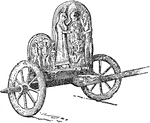
A Graeco-Ertuscan Chariot
"The chariot was discovered in 1903 in an Ertuscan cemetery near Rome. It dates from perhaps 600 B.C.…

A Vestal Virgin
"Portrait from a statue discovered in the ruins of the Temple of Vesta in the Roman Forum."—Webster,…

Suovetaurilia
"The relief pictures an ancient Italian sacrifice of a bull, a ram, and a boar, offered to Mars to secure…

Column of Duilis
"The column was adorned with the brazen beaks of the captured Carthaginian vessels. Part of the inscription…

A Roman Legionary
"From a monument of the imperial age. The soldier wears a metal helmet, a leather doublet with shoulder-pieces,…

A Roman Standard Bearer
"From a gravestone of the first century A.D. The standard consists of a spear crowned with a wreath,…
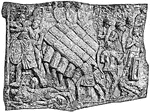
A Testudo
"A relief from the Column of Trajan, Rome. The name testudo, a tortoise (shell), was applied to the…

A Slave's Collar
"A runaway slave, if recaptured, was sometimes compelled to wear a metal collar riveted about his neck."—Webster,…

Pompey
Also known as Gnaeus Pompeius Magnus. He was a military and political leader of the Roman Republic.

Column of Trajan
A triumphal column in Rome, commemorating Roman emperor Trajan's victory in the Dacian Wars.
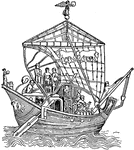
A Roman Freight Ship
"This ship lies besides the wharf at Ostia. In the afterpart of the vessel is a cabin with two windows.…

A Roman Aqueduct
"The Pont du Gard near Nimes (ancient Nemausus) in southern France. Built by the emperor Antoninus Pius.…

A Roman Temple
"The best preserved of Roman temples. Located at Nimes in southern France, where it is known as La Maison…

The Wall of Rome
"Constructed by Aurelian and rebuilt by Honorius. The material is concrete faced with brick; thickness,…

Constantine the Great
Emperor of Rome from 306 to 337. He is best known for being the first Christian Roman emperor.

Tomb of Theodoric at Ravenna
"The two-storied marble structure is capped by an enormous monolith weighing over 300 tons."—Webster,…

Charlemagne
The King of the Franks from 768 and the Emperor of the Romans from 800 until his death in 814.
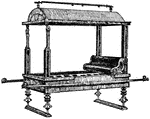
A Roman Litter
"The litter consists of an ordinary couch with four posts and a pair of posts. Curtains fastened to…

The Dying Gaul
A Roman copy of an ancient Greek sculpture. The copy is made of marble, while the lost original sculpture…

Lictors with Fasces
"The symbolic fasces borne by these officers were probably of Ertuscan origin. The Tarquins are said…

Prow of a Roman War Ship
"The representation shows the arrangement of the tiers or oars in a two-banked ship. In just what way…

Pompey the Great
Also known as Gnaeus Pompeius Magnus. He was a military and political leader of the late Roman Republic.
